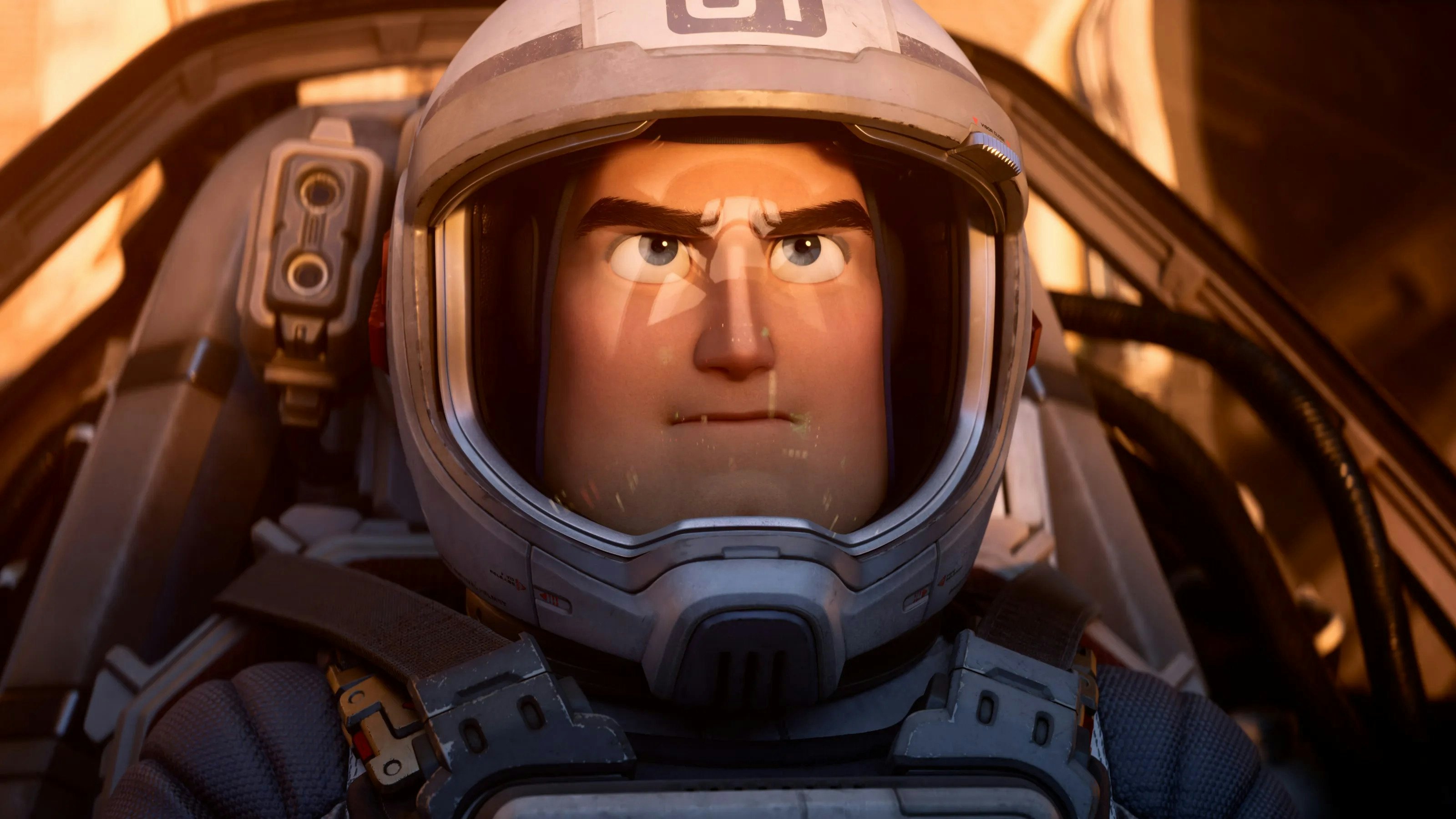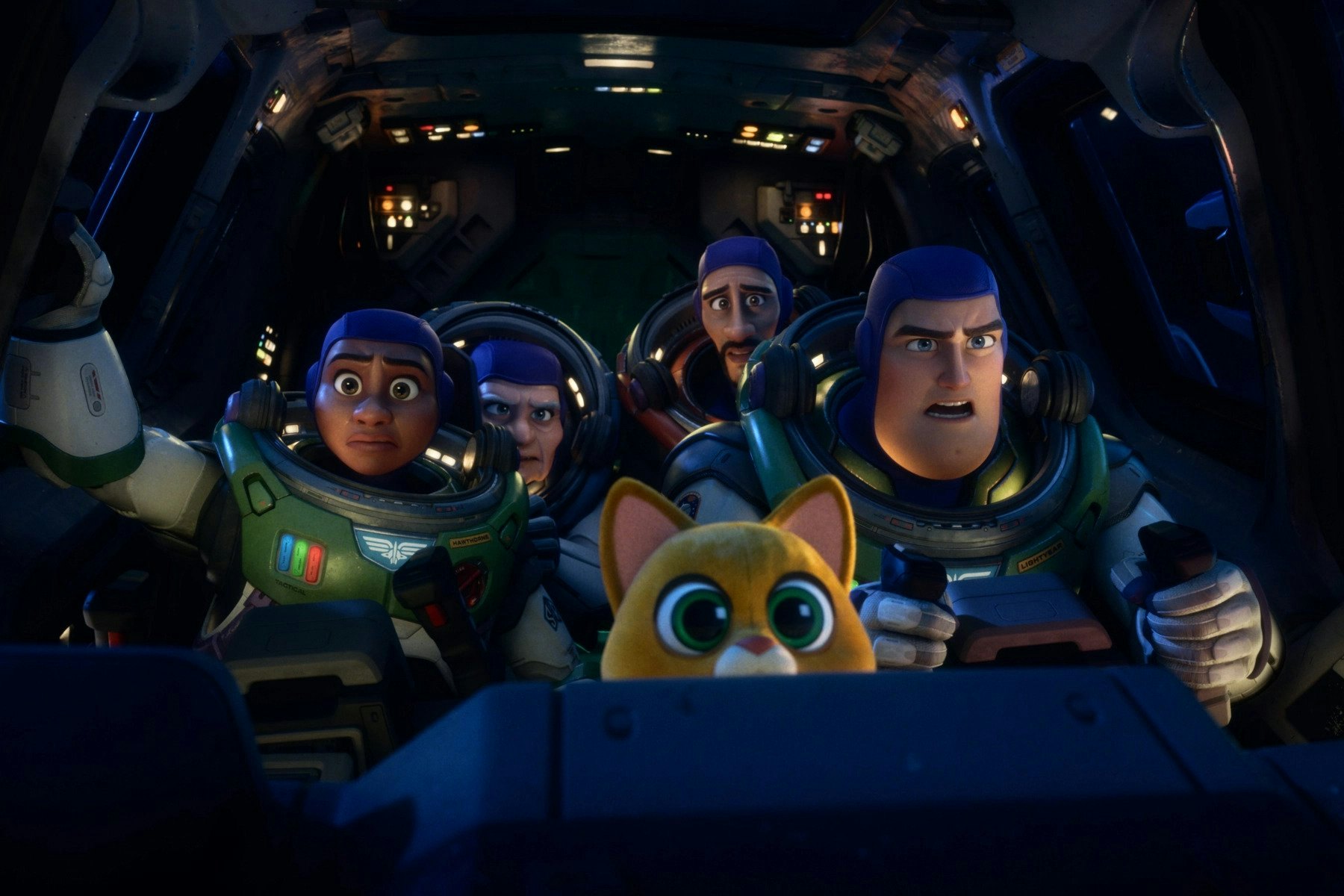
Lightyear starts with a very simple and concise breakdown of its premise: a title card reading only three sentences: “In 1995 Andy got a toy. That toy was based on a movie. This is that movie.”
These three sentences are supposed to quell any remaining questions about just what’s going on. This is the movie that exists within the Toy Story universe that launches the Buzz Lightyear character into pop culture.
But... when did it come out? How did Andy see it? Those three sentences are not enough to satisfy all our pressing questions about the film. Here is Inverse’s best attempt to nail down the precise meta lore of Lightyear.
When did Andy see Lightyear?
If 1995 was when Andy got the toy, that means Lightyear canonically came out in the ‘90s, right? That’s what I thought, but when speaking with director Angus MacLane and executive producer Galyn Susman back in April, I was actually corrected by MacLane.
“Well, it might be late eighties?” MacLane tells Inverse. “I always thought he watched it on VHS, so really it could come out anywhere between 1980 and 1990.” Andy liking toys from before his time makes perfect sense — Woody came from decades before his time.

That seemed to settle it, but in the months since, MacLane has continued to tweak the timeline in various interviews. Speaking to Uproxx he expanded on his “VHS” answer:
Andy received Buzz Lightyear in 1995. The movie is not specified as from 1995. The movie I imagine is actually from 1986, maybe 1985. So it’s a little earlier. He saw the movie on VHS a lot. And then after that movie, maybe there were other movies, but then there was a TV show. Like Ghostbusters. You know? Then The Real Ghostbusters. And then The Real Ghostbusters had their own toy line with Kenner.
So the reason Chris Evans voices Lightyear’s Buzz and Tim Allen voices Toy Story’s Buzz is because the TV series had a different voice cast, apparently. Sure, I guess that makes sense. (By the way, MacLane’s answer about a Lightyear TV series is not at all related to the IRL 2000 animated series Buzz Lightyear of Star Command, which is not at all canon in the Lightyear universe and featured Patrick Warburton as the voice of Buzz.)
The question seemed to be answered, but that answer wouldn’t last long. On June 15, Pixar’s official Twitter account for the Lightyear movie shared an image of Andy watching the Buzz Lightyear movie in a movie theater. That means either:
- Lightyear was released in theaters to capitalize on the toys popular in the ‘90s
- Andy actually did see Lightyear in theaters when it first premiered
- This art has nothing to do with Pixar canon
Then, there’s the elephant in the room: Lightyear has gotten flak from homophobic people for including a lesbian kiss. Pragmatically speaking, this wouldn’t fly in the nineties, and especially not in the late eighties. I’m all for diversity in movies, so I’m going to choose to believe that the version we’re seeing is some sort of progressive directors’ cut. If you can suspend your disbelief to buy into a movie within a movie, you can buy into women loving women within that universe.
It feels like no matter how many interviews I read, I’m always going to have questions. Is Lightyear a live-action movie within an animated universe? Is it an animated movie with incredibly good graphics? It’s something that can be argued all day, but that’s not the point of the movie. The point is for us to experience the same wonder Andy felt watching this movie for the first time.
But like with all sci-fi movies, the wonder is often paired with pedantic nitpicking from some fans. So, if anything, the confusion just makes the experience all the more realistic.
Lightyear is now playing in theaters.







